Indianz.Com > News > Underscore.news: Powwow returns to penitentiary for first time since COVID-19
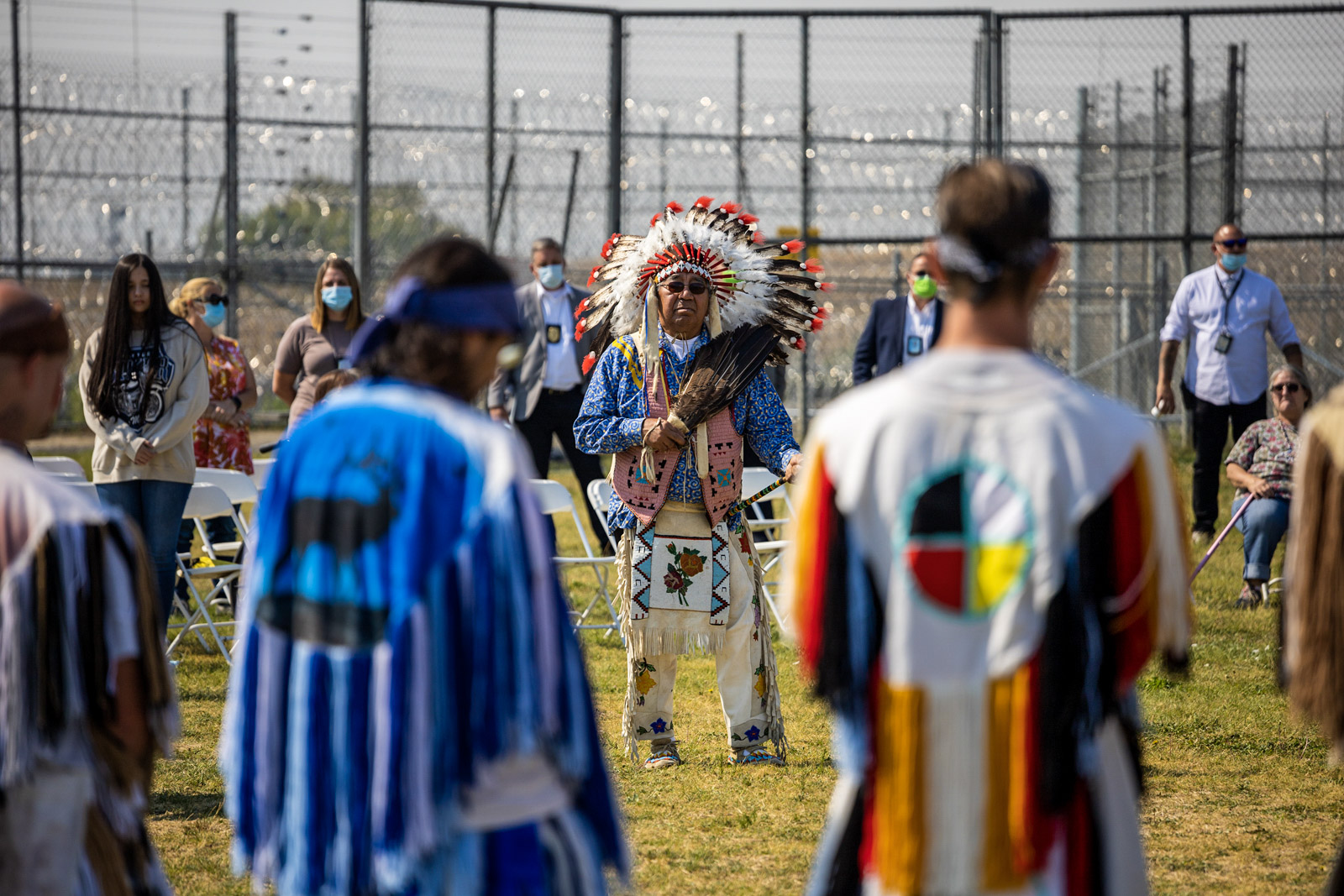
Indigenous Prisoners Hold First Powwow Since 2019
For Native Americans incarcerated at the Washington State Penitentiary, the September event was a highlight of the year that they fought to preserve.
Monday, October 3, 2022
This story originally appeared on Underscore News.
In the grassy plateau of eastern Washington, powwow dancers in full regalia entered a circle of spectators, drummers and singers. There were grass dancers adorned with brightly colored fringe that shook and swayed with their movements. Jingle dancers covered in tiny metal cones added to the percussive rhythm.
But most of the dancers that day were dressed in identical khakis and white tee shirts. They moved to the beat of the drums, surrounded by their families and supporters. Outside that ring stood rows of chain link fences topped with razor wire.
On September 8, Native American prisoners at the Washington State Penitentiary in Walla Walla hosted their first powwow in three years, a 50-year tradition temporarily halted by the Covid-19 pandemic.
“Today is a big day, to be able to see our families,” said Yakama inmate Tallon Saluskin. “And to get to show love.”
Thirty-seven Indigenous inmates and 75 guests attended the first of 22 powwows scheduled for September and October in Washington state prisons. It was the first time the Washington State Department of Corrections allowed an outdoor powwow in a medium-security prison. There was drumming and dancing, plus a feast of salmon, buffalo stew and fry bread. Late in the afternoon, prisoners presented handmade gifts to nearly every attendee.
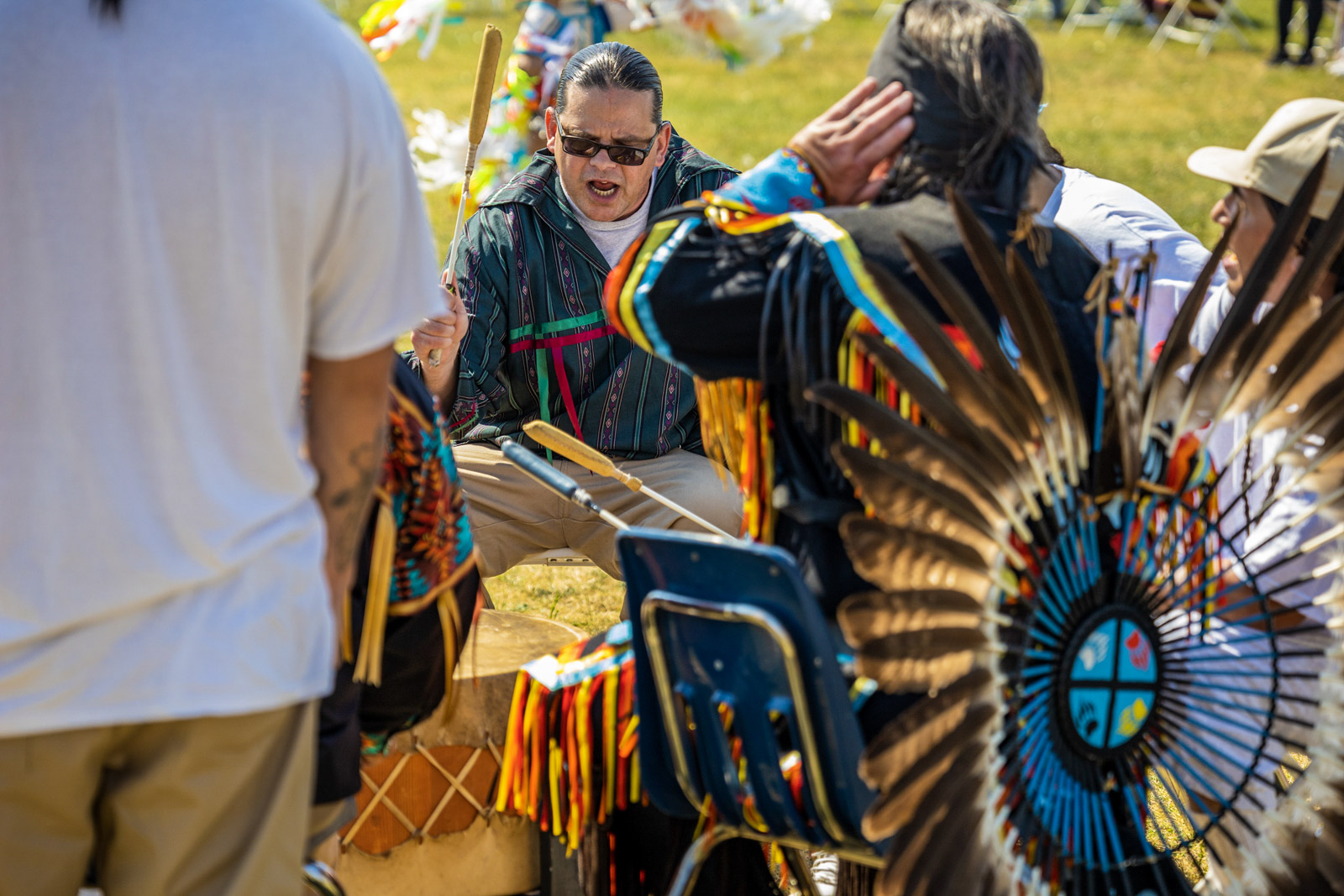
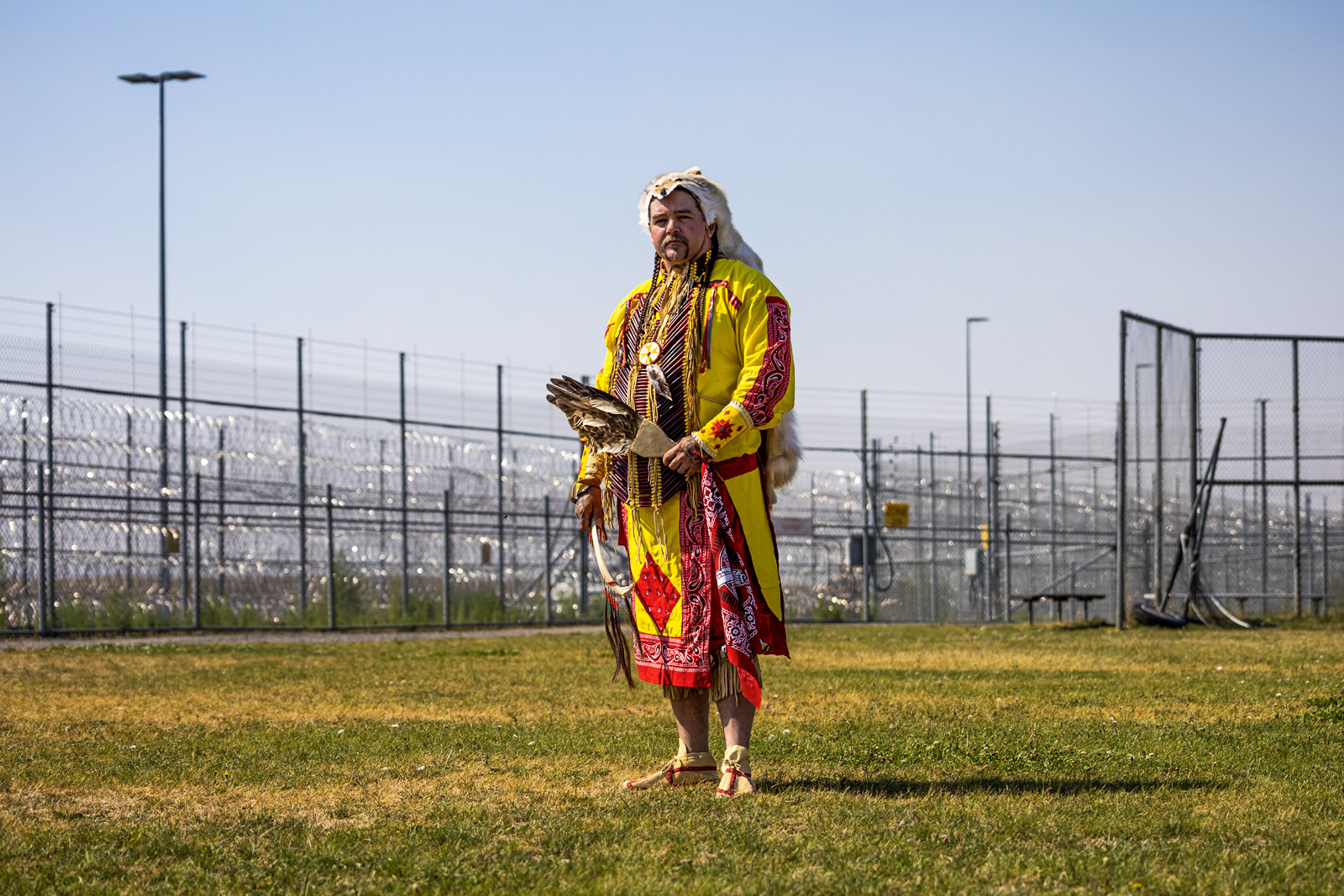
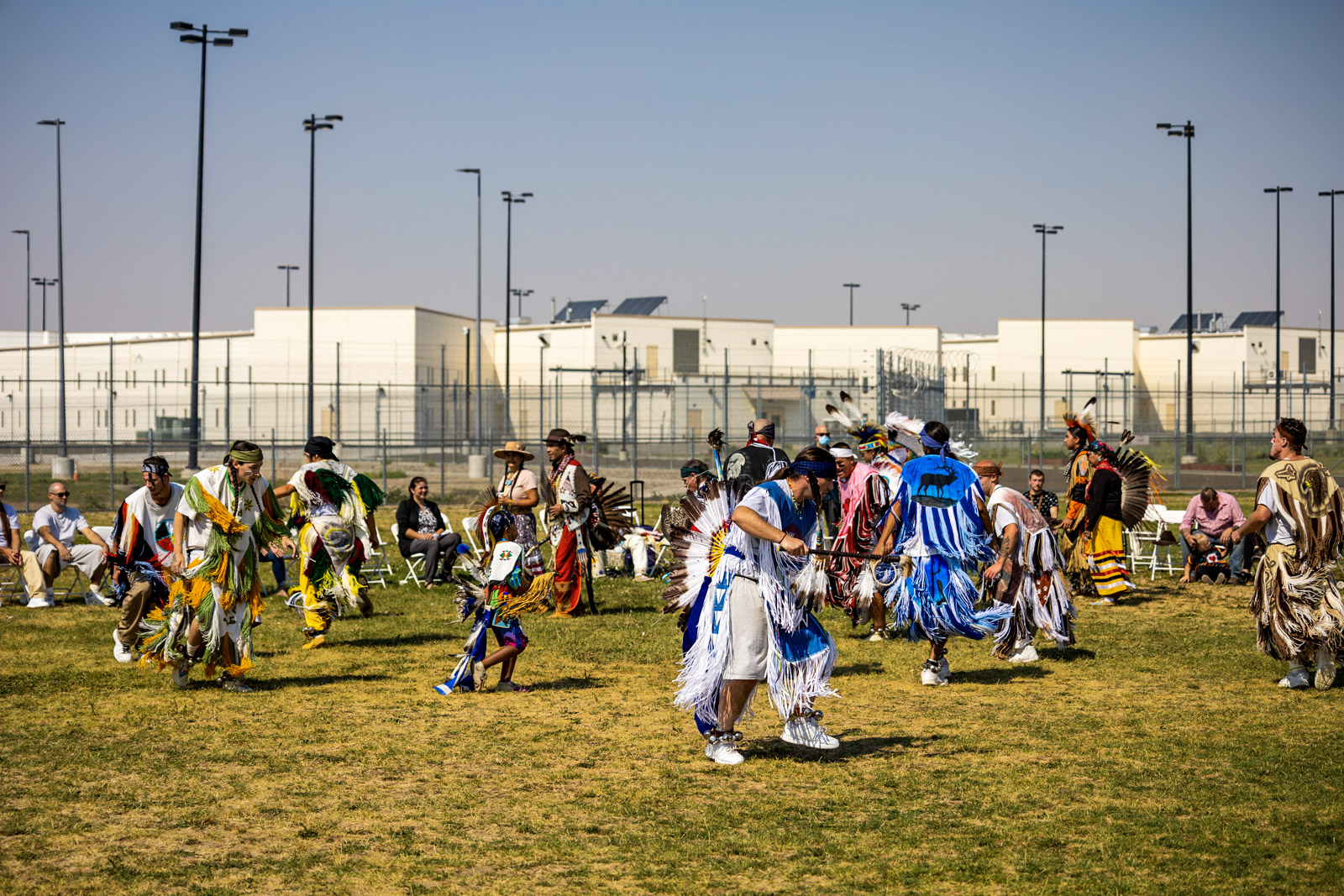
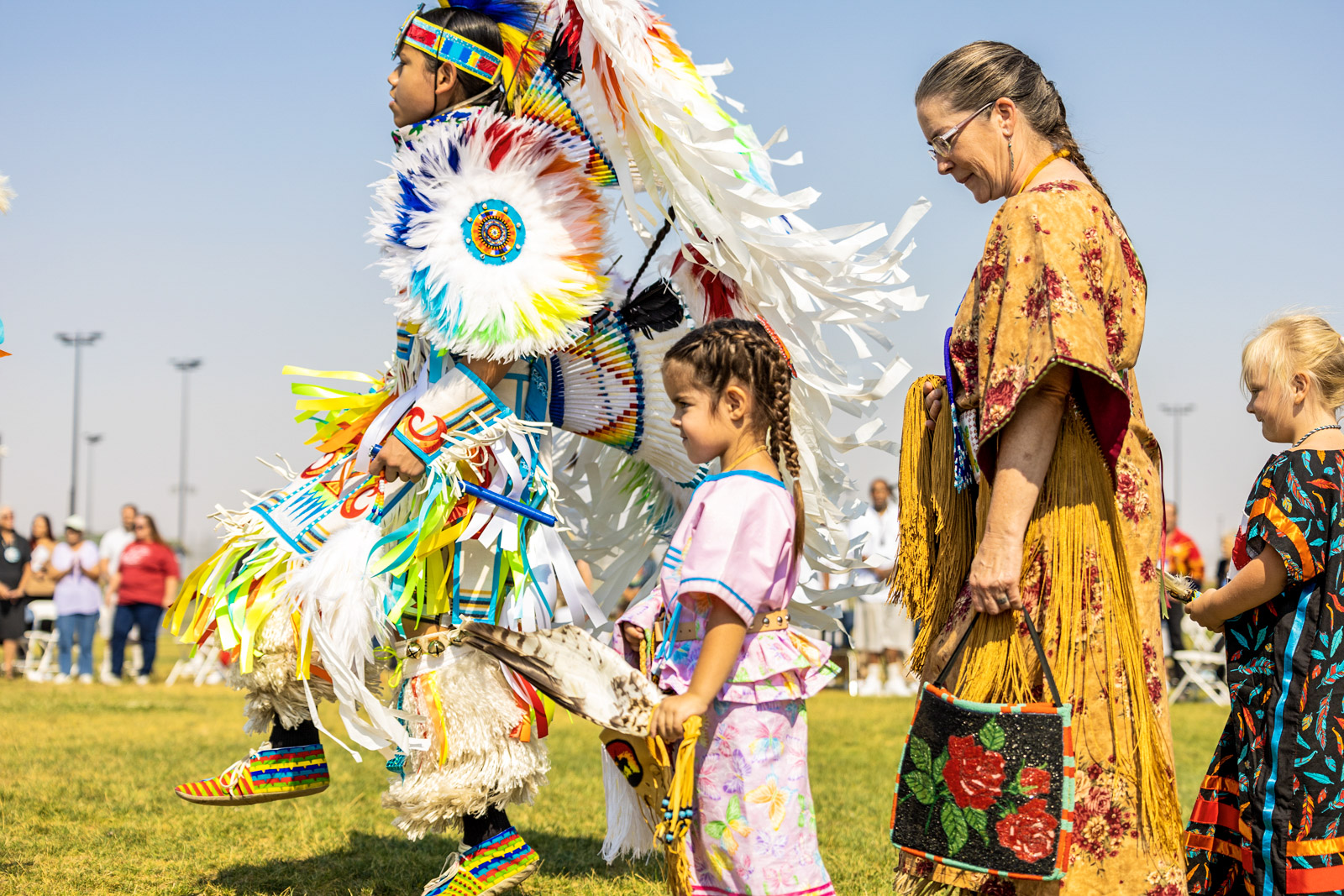
‘We try to help you find your way’
Within the 12 Washington state prisons, there are 21 “hoops,” or Native religious circles. Each hoop is self-organized and self-governed. And they get legal and practical support from Huy and Unkitawa.
“They organize themselves culturally and religiously and we try and support them when there is a concern of law,” Galanda said.
At the Washington State Penitentiary, the South Compex Circle can currently attend a sweat lodge ceremony twice a month and a drumming circle twice per week. When they’re preparing for a powwow, drumming circles get bumped up to three times per week.
Jarrod Airington, a Quinault inmate, said part of the hoop’s purpose is to help Indigenous prisoners connect with their traditional cultural practices.
“If this is the walk that you want to walk, you come to the hoop and we try to help you find your way, because we all have different beliefs in our own nations,” Airington said. “This is just a starting point.”
Airington is also in charge of the prison medicine garden. There, hoop members tend plants from seed to harvest, then braid sweetgrass and sift lavender flowers to make the medicine they use for smudging, in sweat lodges and for pipe ceremonies.
“A lot of these guys, they come from the cities and they were never a part of that,” Airington said.
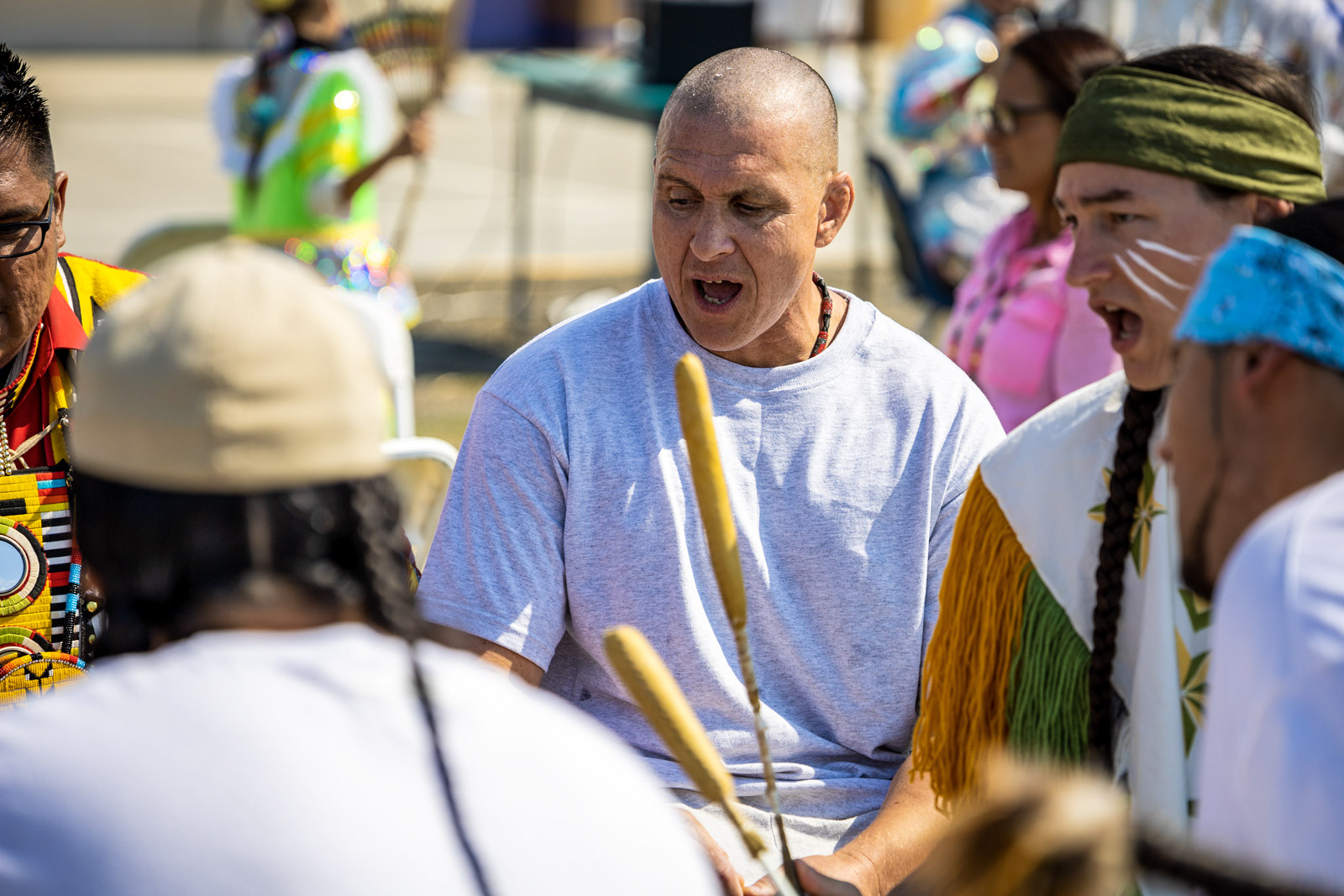
‘My prayers are with my brothers here’
Presiding over the September event was the most instrumental prison hoop leader in the state. And after 35 years, this could be his last powwow as a prisoner.
Herbert “Chief” Rice leads the South Complex Circle. Rice was convicted of murder at the age of 17 and is serving two consecutive life sentences. But the U.S. Supreme Court ruled in 2012 that life sentences for juveniles are unconstitutional. Rice is scheduled for resentencing in December, where he could be released.
Joey Brooks, the Lakota inmate, said Rice’s possible release increased the significance of the September powwow.
“Herbert Rice has been a pretty big role model,” Brooks said. “If he gets out, it’s going to be left to one of us. And I hope he does get out. Because he’s going to be a big help to us out there.”
Prison officials asked Underscore News not to quote Rice, and to include only the voices of the three prisoners they had designated for interviews.
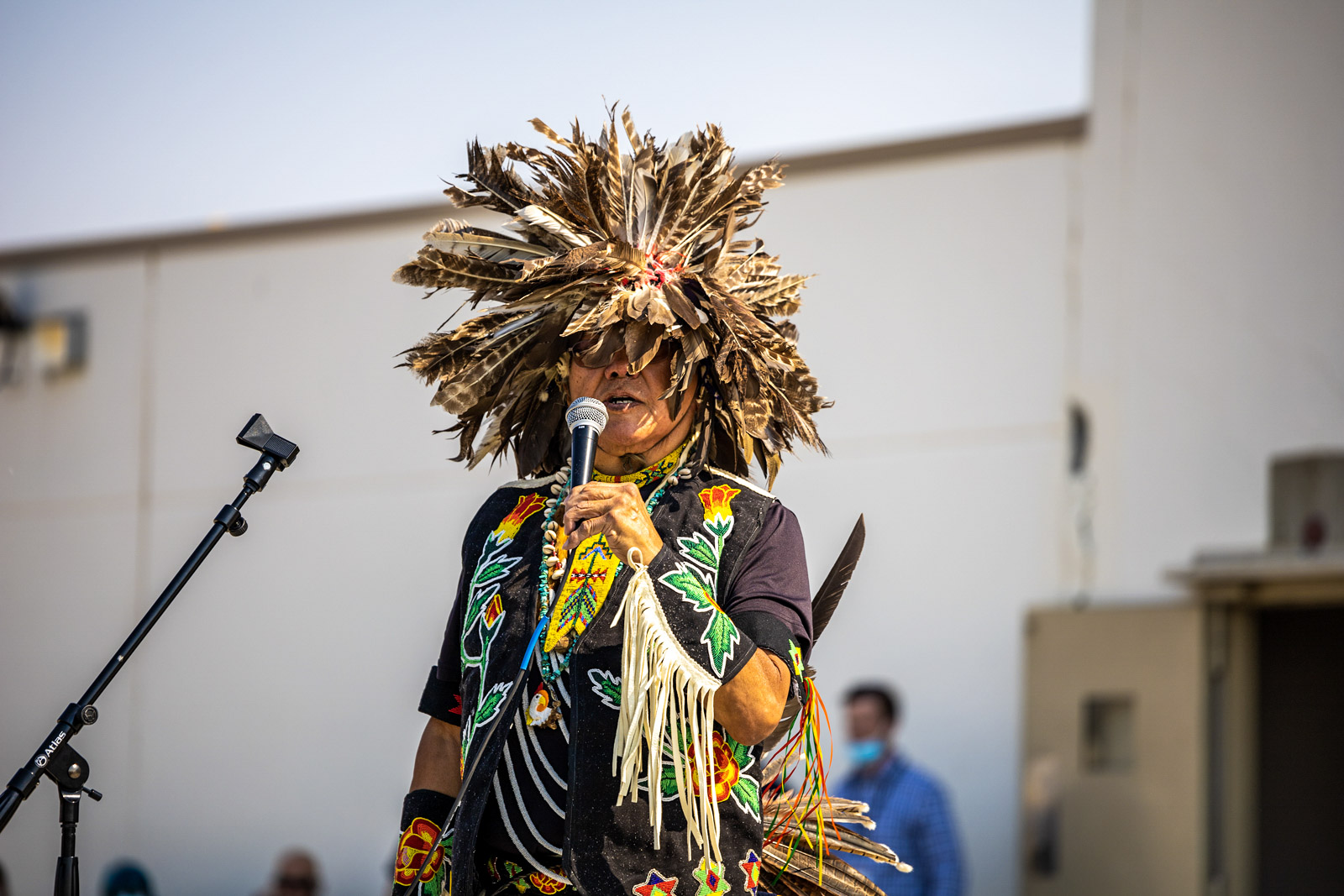
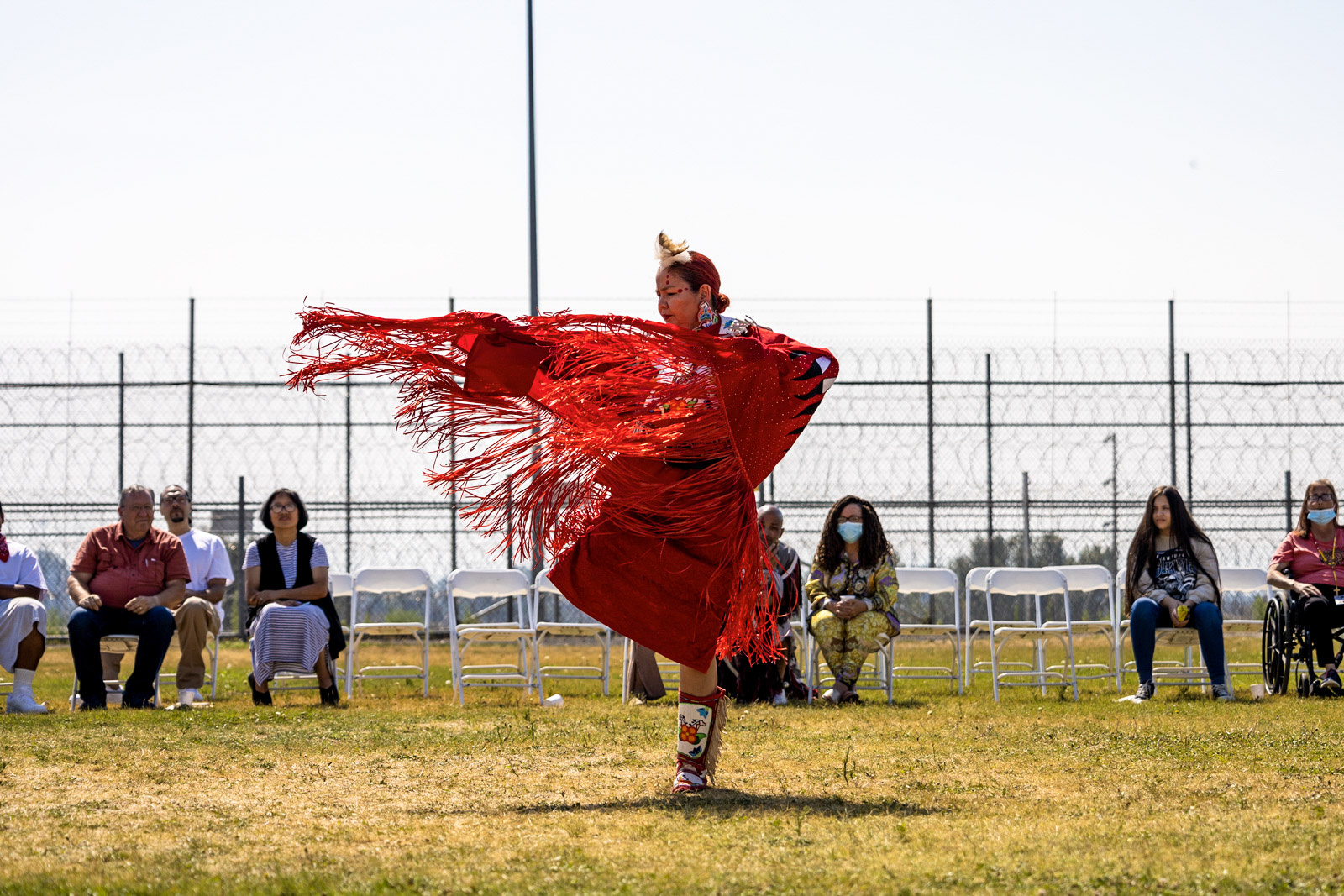
‘I’m going to sit here with my mom all day’
Throughout the year, Indigenous prisoners at Washington State Penitentiary work on the gifts they will give to their families and friends at that year’s powwow. At the event in September, tables lined up along the prison’s concrete wall were covered with gifts. Painted drums and beadwork of all kinds were crowded among carved wooden salmon, pipes and medicine pouches. Boxes filled with colorful handmade quilts sat under the tables.
Hoop members presented their families with gifts made specifically for them. At the end of the day, they gave out the extra gifts, with something for almost every attendee.
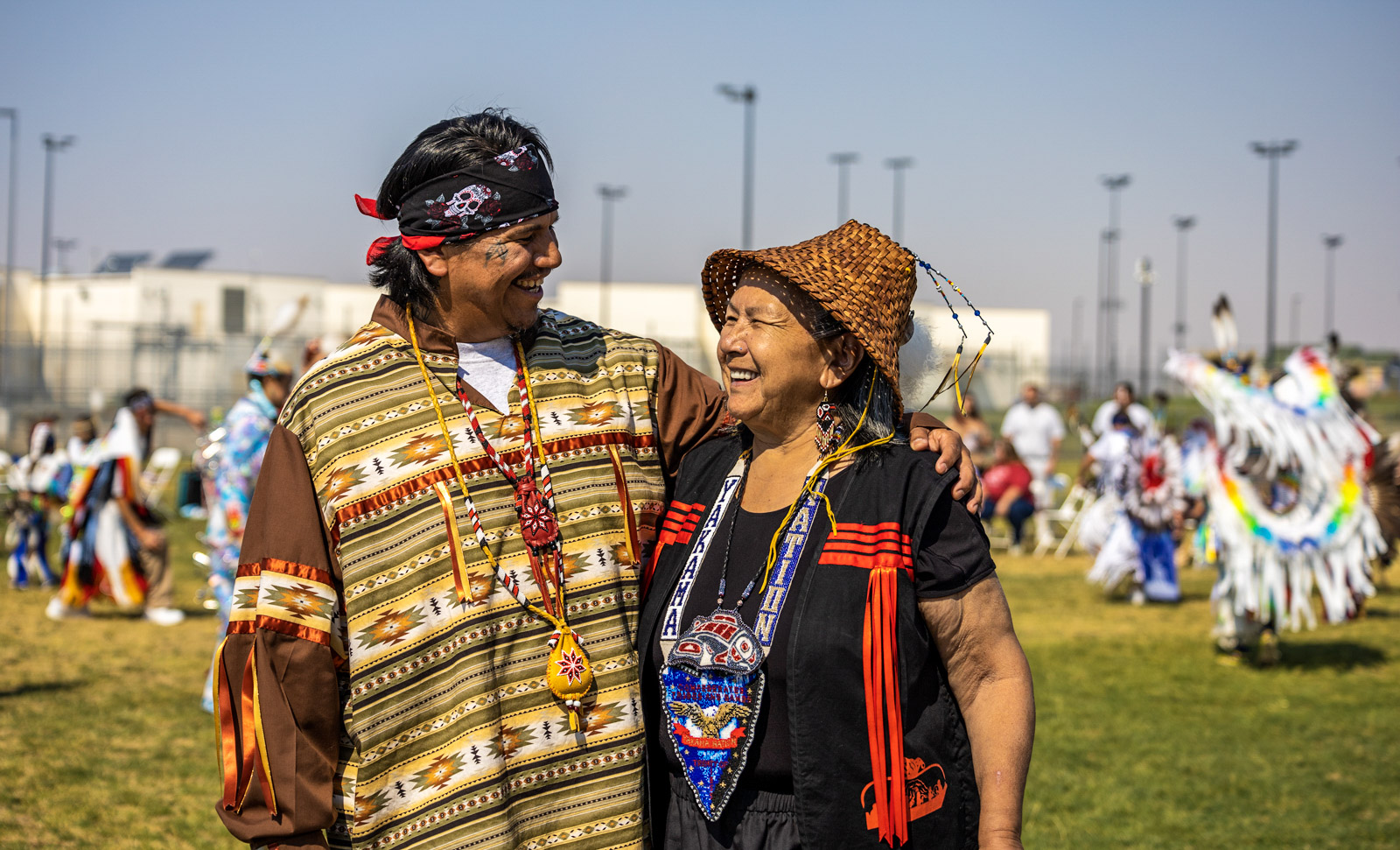

‘The medicine will bring you back’
Brooks said the hoops aren’t supported by all prison staff.
“There’s some staff that don’t want this,” Brooks said. “They’re ignorant to our ways. They’ve said, ‘They shouldn’t be allowed to do war dancing.’ But it’s not war dancing. What we’re doing is walking in the footsteps of our ancestors.”
But he said staff support has grown over the years.
“There’s always been that racism, but I think they’re realizing this is what’s going to keep us from reoffending,” Brooks said.
He said his lack of participation in his religion was part of what brought him to where he is now. For many, he added, it points a way out.
“Were you out there powwowing? Were you out there ceremonying?” Brooks asked. “The answer is no and this is the result, coming here. But we say no matter how far you get off the path, the medicine will bring you back.”
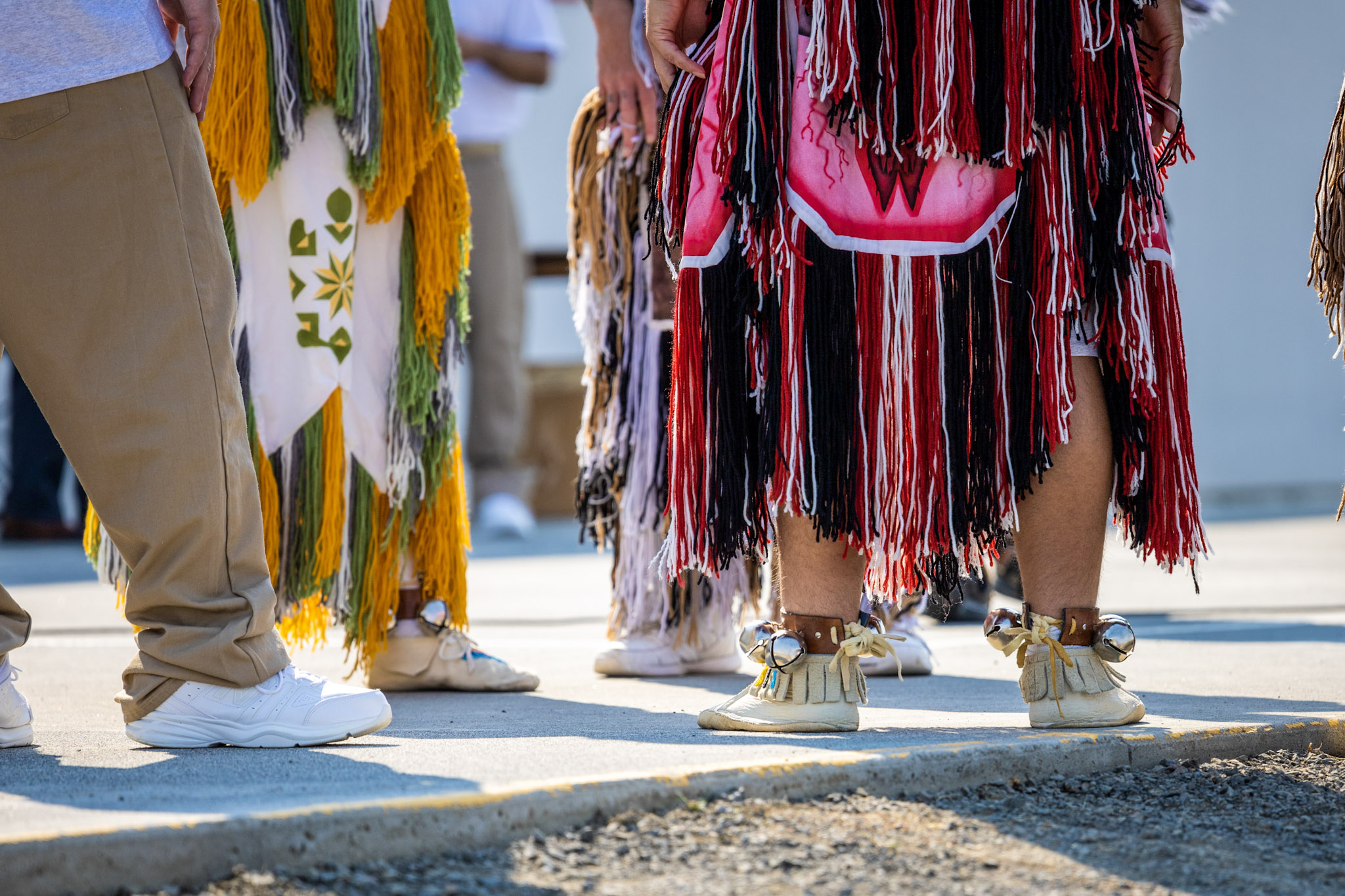
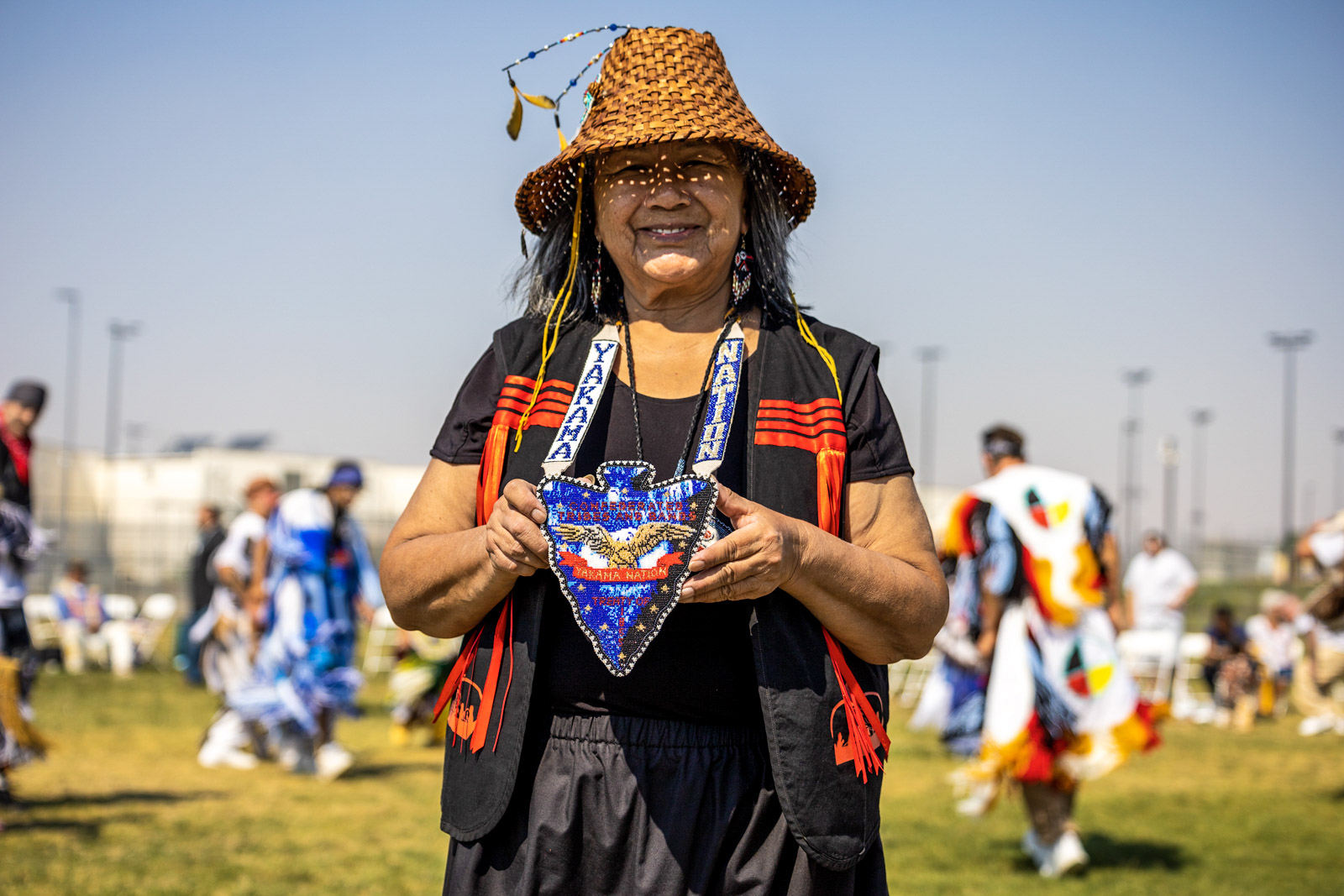
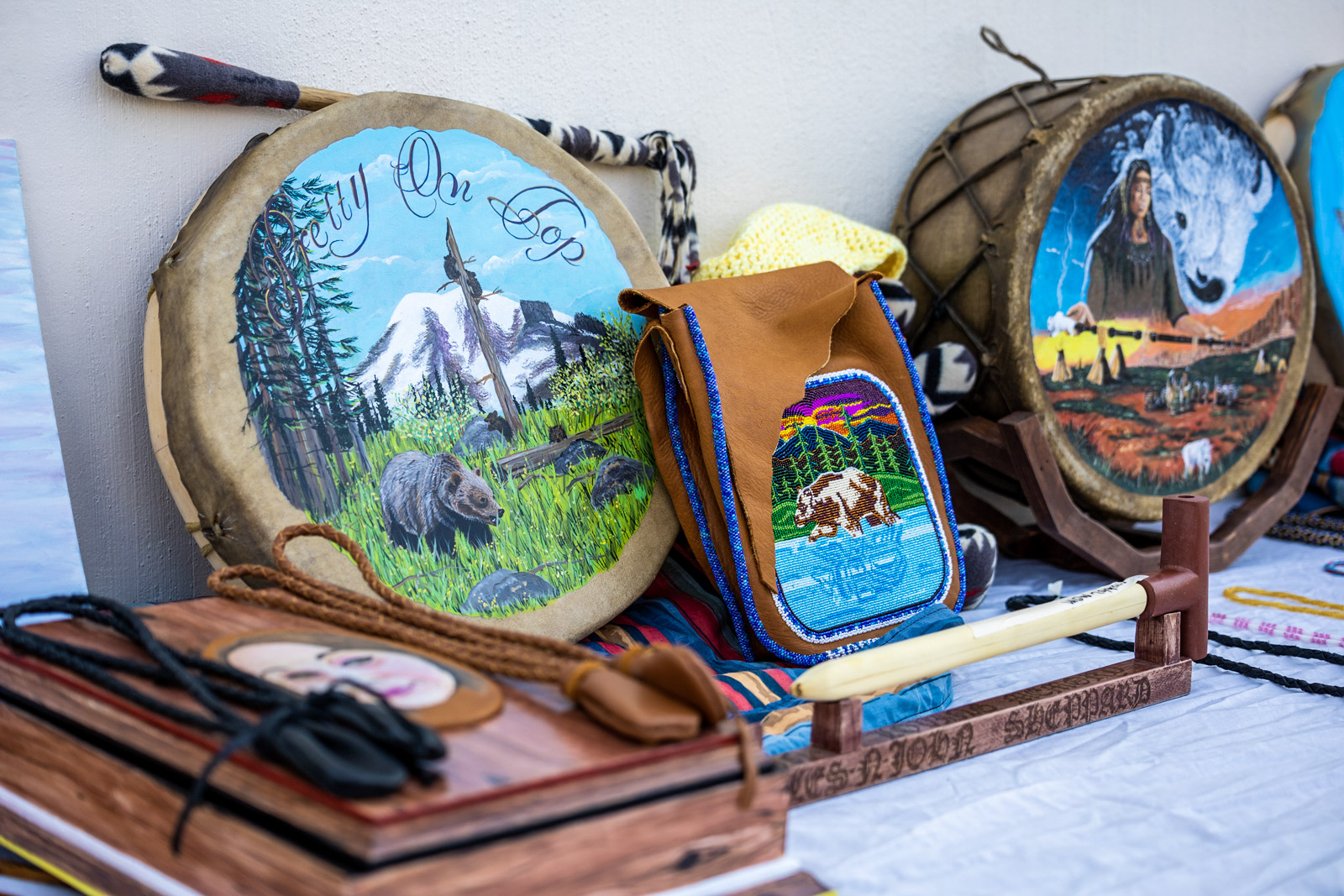
As managing editor, Karina guides Underscore’s mission to illuminate the strength and vibrancy of Indigenous communities as well as the challenges they face. She oversees and assists Underscore’s talented reporters on a wide variety of projects, strategizes about long-term story choices, manages our organization’s collaborations and partnerships, and does her own reporting for Underscore. Karina started out in journalism in 2005, covering courts in Oregon. She has reported from a wide spectrum of places, from the chaos of far-right extremist rallies to the hushed decorum of federal courtrooms, and has focused her coverage on environmental issues, policing and tribal sovereignty. She likes to relax with a run in the woods, a ballet class, or by drawing and painting.
This story originally appeared on Underscore.news. Underscore is a nonprofit collaborative reporting team in Portland focused on investigative reporting and Indian Country coverage. We are supported by foundations, corporate sponsors and donor contributions. Follow Underscore on Facebook and Twitter.
Search
Filed Under
Tags
More Headlines
Native America Calling: Lumbee Nation secures its sovereign status
Native America Calling: The Year in Native News
Native America Calling: Native music in 2025
Native America Calling: Amid Greenland’s independence push, Denmark accounts for colonial blunders
Senate Committee on Indian Affairs sets business meeting and hearing
Native America Calling: Saving historic architecture and other important places
VIDEO: H.R.2400, the Pit River Land Transfer Act of 2025
VIDEO: H.R.3620, the Southcentral Foundation Land Transfer Act of 2025
VIDEO: H.R.2815, the Cape Fox Land Entitlement Finalization Act of 2025
AUDIO: H.R.2400, the Pit River Land Transfer Act of 2025
AUDIO: H.R.3620, the Southcentral Foundation Land Transfer Act of 2025
AUDIO: H.R.2815, the Cape Fox Land Entitlement Finalization Act of 2025
Native America Calling: Native in the Spotlight with Randy Taylor
NAFOA: 5 Things You Need to Know this Week (December 15, 2025)
Chuck Hoskin: Cherokee Nation celebrates milestone in tribal gaming
More Headlines
Native America Calling: The Year in Native News
Native America Calling: Native music in 2025
Native America Calling: Amid Greenland’s independence push, Denmark accounts for colonial blunders
Senate Committee on Indian Affairs sets business meeting and hearing
Native America Calling: Saving historic architecture and other important places
VIDEO: H.R.2400, the Pit River Land Transfer Act of 2025
VIDEO: H.R.3620, the Southcentral Foundation Land Transfer Act of 2025
VIDEO: H.R.2815, the Cape Fox Land Entitlement Finalization Act of 2025
AUDIO: H.R.2400, the Pit River Land Transfer Act of 2025
AUDIO: H.R.3620, the Southcentral Foundation Land Transfer Act of 2025
AUDIO: H.R.2815, the Cape Fox Land Entitlement Finalization Act of 2025
Native America Calling: Native in the Spotlight with Randy Taylor
NAFOA: 5 Things You Need to Know this Week (December 15, 2025)
Chuck Hoskin: Cherokee Nation celebrates milestone in tribal gaming
More Headlines